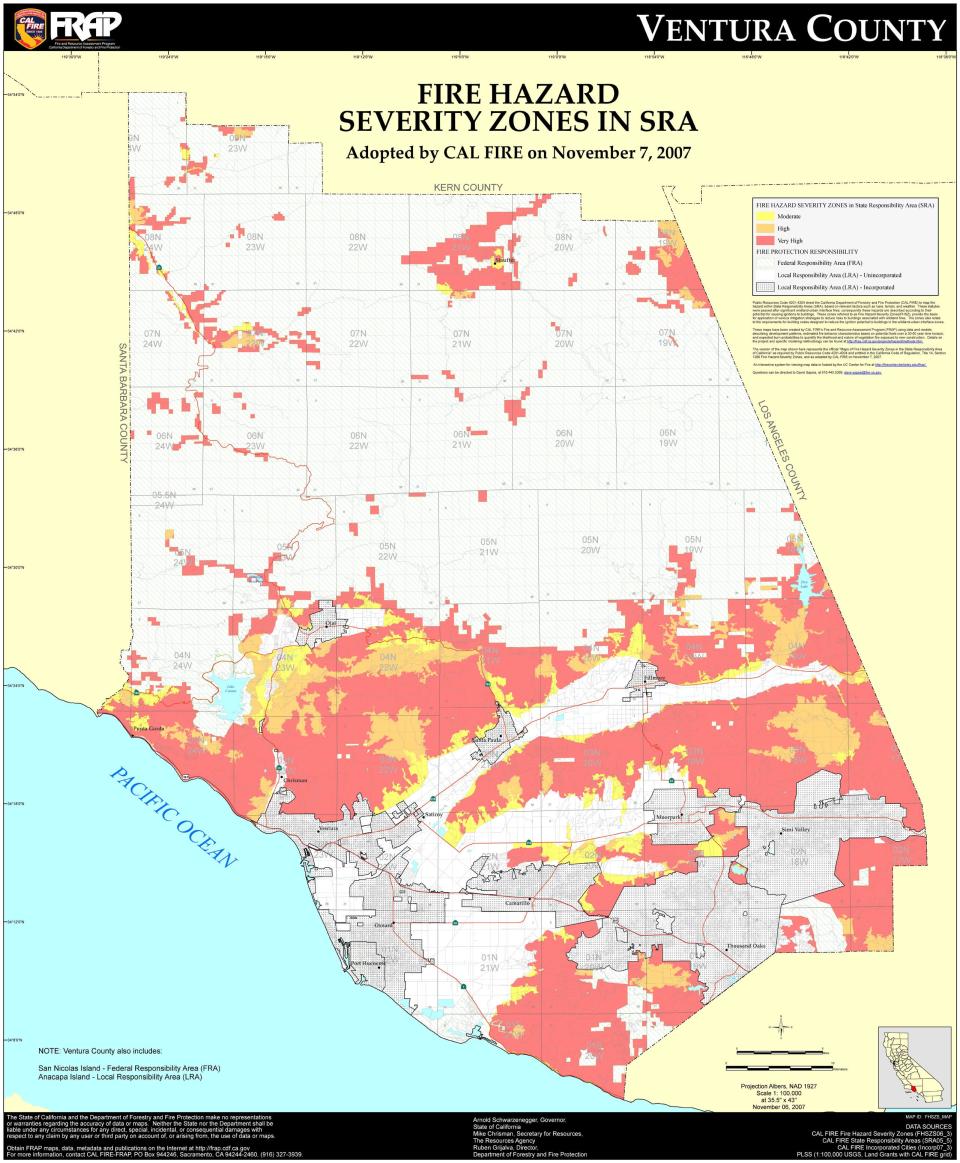State denies additional water for fire-prone Southern California neighborhoods
State officials have denied a request to provide additional water in some Southern California wildfire-prone neighborhoods saying other options exist to reduce risks.
Last month, Metropolitan Water District of Southern California had requested the extra water for several agencies in its service area, including the Thousand Oaks-based Calleguas Municipal Water District. Those agencies provide water for areas classified as some of the most hazardous in the state for wildfire.
Metropolitan provides imported water from Northern California through the State Water Project to parts of Ventura, Los Angeles and San Bernardino counties. But after a record dry start to the year, the state limited its deliveries to just 5%. In response, Metropolitan required millions of its customers to cut outdoor watering to one day a week as of June 1 or find other ways to conserve.
If enough water isn’t saved, the communities face a ban on outdoor watering.
More: Ventura County's city-by-city guide to water-use restrictions amid California drought
The additional water could have helped keep vegetation alive – and less prone to burning – in spots where open space bumps up against neighborhoods, said Michael McNutt, public affairs manager for the Calabasas-based Las Virgenes Municipal Water District.
“But the reality of it is, there’s just not enough water available to do that,” he said.
The request was denied late last month.
“With California in a third year of drought, and with a strong possibility that 2023 will be a fourth, DWR has a responsibility to preserve as much water storage as possible for use next year,” according to a letter sent from California’s Department of Water Resources and Department of Forestry and Fire Prevention.

Other options to protect homes can be "equally effective," the letter states. Alternatives include removing dead and dying vegetation.
Here's what some local experts said about the drought emergency and the risk of wildfires.
More: Simi Valley reduces outdoor water use again to 10 minutes once a week
Are fire officials concerned?
Vegetation is dying and when it dies it becomes more flammable, said Ventura County Fire Chief Dustin Gardner.
“Anytime we increase flammable vegetation around homes it creates concern,” he said.
But a lot of strategies exist "to limit the threat whether it’s native vegetation dying on a hillside because we’re not getting rain or landscape vegetation dying because we don’t have the water to run our sprinklers,” Gardner said.
He listed options that include removing flammable vegetation within 100 feet of homes and low-hanging tree branches. More information is available at vcfd.org/ready-set-go.
More: Southern California residents cut water in drought of 'epic proportions'

How have water cuts affected vegetation?
Sean Anderson, an environmental scientist at CSU Channel Islands, started seeing lawns turn brown in his Conejo Valley neighborhood last month, several weeks after outdoor watering restrictions took effect. Most trees and shrubs still seem mostly healthy, he said.
The professor is working with students to survey several communities that dropped to one-day-a-week watering to study what happens. Plans call for analyzing satellite data in combination with the on-the-ground observations.
So far, it appears at least 75% of the lawns in areas of Camarillo and the Conejo Valley are dead or drying, Anderson said. Some trees show signs of stress, but the percentage is much lower, Anderson said.
“The hottest, driest time for us in our part of the world is really September, early October,” he said. “That’s when things will be the most stressed.”
For now, he doesn’t see a lot of additional fire risk caused by watering restrictions. A total outdoor watering ban could change things, but even then, not overnight, according to Anderson.
“If we had a significant period where no one can do any watering, that’s more the scenario we might get worried about in terms of wildfire risk,” he said. “We’re not there yet.”
How to prepare for wildfires
Tips on how to prepare for fires and other emergencies: vcfd.org/ready-set-go and osfm.fire.ca.gov/divisions/community-wildfire-preparedness-and-mitigation.
Sign up to get emergency alerts from Ventura County Sheriff’s Office of Emergency Services: readyventuracounty.org/vc-alert.
Information about California's drought: drought.ca.gov.
The Las Virgenes Municipal Water District, which provides water to Westlake Village, Agoura Hills, Hidden Hills, Calabasas and part of unincorporated Los Angeles County, plans to hold a workshop in September to discuss strategies for addressing wildfire risks. For updates, visit lvmwd.com.
Cheri Carlson covers the environment for the Ventura County Star. Reach her at cheri.carlson@vcstar.com or 805-437-0260.
This article originally appeared on Ventura County Star: State denies additional water for fire-prone neighborhoods. Here's why

 generic
generic 